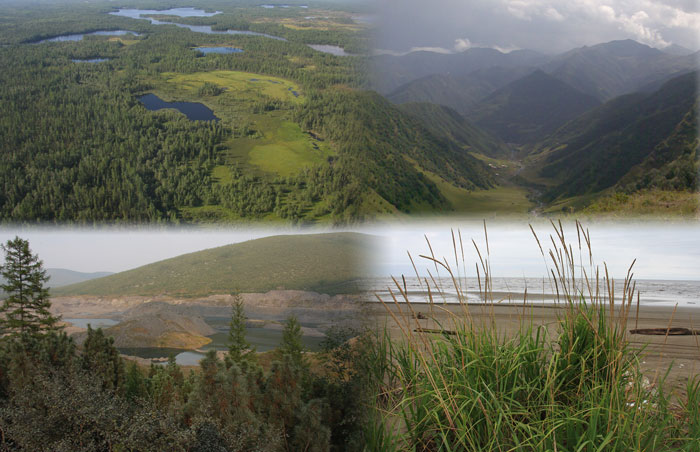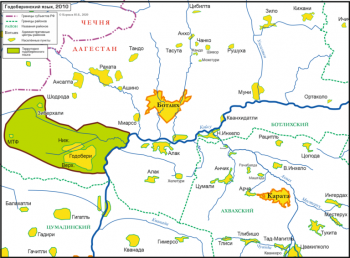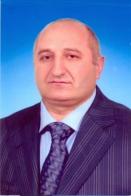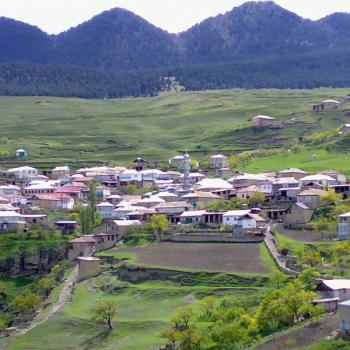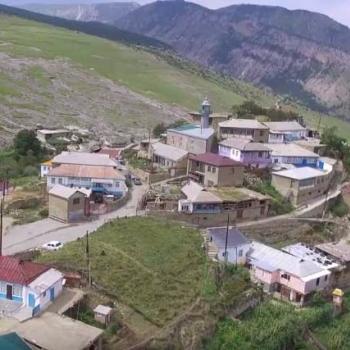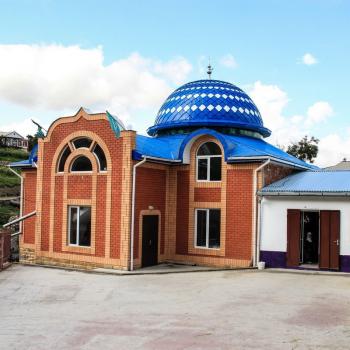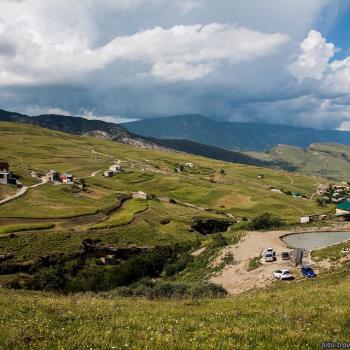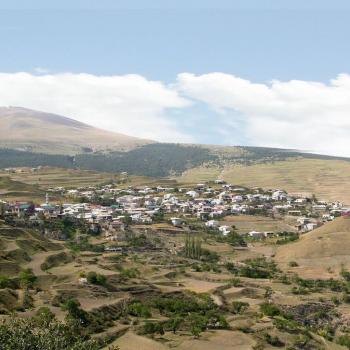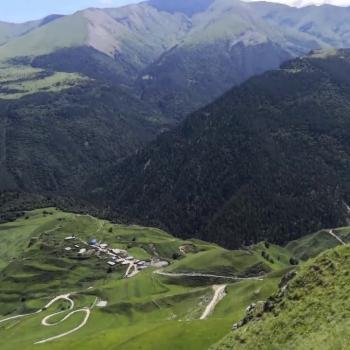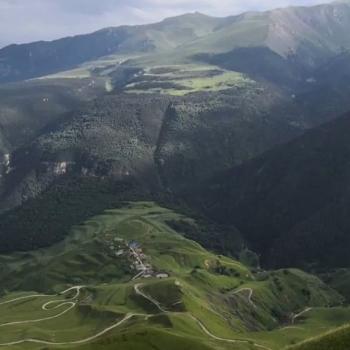Brief Information
Godoberi is spoken on the territory of the Dagestan Republic – in the mountainous villages of the Botlikh District, as well as in the resettlement villages of the Khasavyurt, Tarumov and Kizlyar Districts, in the capital and other cities of the Dagestan Republic.
Traditional settlement is compact in mountainous areas.
According to the 1989 census, the Godoberi people are not recorded and are officially registered as Avars. Accoring to the 2002 census, there were recorded only 39 Godoberi people. The population of the Godoberi people based on the 2010 census is 427 people. According to the experts’ estimates by January 2020, the total number of the Godoberi people in Russia is about 8,500 people.
Godoberi has no dialect divisions; however, there are two local varieties: Godoberi Proper and Zibirkhali with some minor phonetic and lexical differences.
The main Russian endonym of the Godoberi people is godoberintsy. The Godoberi people do not have a general self-designation and call themselves by the names of localities: гъибдиди «the Godoberi people» и шалади «the Zibirkhali people».
The Godoberi people are Sunni Muslims.
Genealogy
Godoberi is one of the Andic languages of the Nakh-Daghestanian language family. Two local varieties are distinguished: Godoberi Proper and Zibirkhali.
The Verkhnee Godoberi village of the Botlikh District (Dagestan, Russia)
The Nizhnee Godoberi village of the Botlikh District (Dagestan, Russia)
The Zibirkhali and Beledi village of the Botlikh District (Dagestan, Russia)
The Terechnoe village of the Khasavyurt District (Dagestan, Russia)
The Tarumovka village of the Tarumov District (Dagestan, Russia)
The Yurkovka village of the Tarumov District (Dagestan, Russia)
The Malaya Areshevka village of the Kizlyar District (Dagestan, Russia)
The Zhdanova village of the Kizlyar District (Dagestan, Russia)
The Krasno-oktyabrskoe village of the Kizlyar District (Dagestan, Russia)
The Krasny Voskhod village of the Kizlyar District (Dagestan, Russia)
The Kamar-khutor village of the Kizlyar District (Dagestan, Russia)
The Utsmiyurt village of the Babayurt district (Dagestan, Russia)
Makhachkala
Khasavyurt
Kizilyurt
Kizlyar
Yuzhno-Sukhokumsk
Dialects and their distribution
Language contacts and multilingualism
The Godoberi people are in close contact with speakers of the following languages: Avar, Russian, Chechen, Chamalal, and Botlikh.
Most of the Godoberi people speak Avar, which is the regional lingua-franca in the Andic and Tsezic areas. The level of the Avar proficiency amongst the Godoberis is high.
All Godoberis are fluent in Russian, which is the language of inter-ethnic communication in Dagestan.
There is a small number of the Godoberi people who speak Botlikh and Chechen.
Traditionally, Godoberi speakers were bilingual (Godoberi-Avar), and nowadays they are trilingual (Godoberi-Avar-Russian). A few speakers know Botlikh, Chamalal, and Chechen languages.
Language functioning
- Legal status
- Writing system
- Language standardization
- Domains of language usage
Godoberi has no official status. The Constitution of the Republic of Dagestan defines Godoberi as one of the non-written languages of peoples of Dagestan.
Godoberi does not have an officially established writing system. Avar and Russian are generally used as written languages.
Godoberi does not have a literary variety. Godoberi people of different dialects speak their own dialects with each other.
Family / everyday communication
Family / everyday communication
Godoberi is the main language of home and of community life.
Education
Education
Godoberi is not a subject of study. Avar is taught at schools as ‘mother tongue’. In preschool, Godoberi is used as the language of instruction and education.
Godoberi is not used in the writing of textbooks and manuals.
Mass media
Mass media
Godoberi is not used in the domains of the mass media. There are no television or radio programs in Godoberi.
Culture
Culture
There is no theatre or cinema in Godoberi. Avar and Russian are used in these domains.
Science
Science
There are no scientific works published in Godoberi. Russian is used in this domain.
Folklore
Folklore
There are no publications of folklore in Godoberi.
Literature
Literature
There are no Godoberi literary works.
Religion
Religion
Arabic is used as the language of religion. Godoberi and Avar are also often used in rituals and chants.
Legislation
Legislation
There are no official documents in Godoberi. Russian is used in this domain.
Administrative activities
Administrative activities
Godoberi is not used in administrative activities. However, in informal communication it is used in the village administration, school, library, shops, and kindergarten.
Legal proceedings
Legal proceedings
Russian is used as the language of legal proceedings in the Republic of Dagestan.
Industry
Industry
There is no industry in the region where the Godoberis live.
Agriculture
Agriculture
Godoberi is used in informal communication in agriculture domain.
Trade and service
Trade and service
Godoberi is used in services and trade in Godoberi-speaking villages.
Transport
Transport
Godoberi is used in transport running from Godoberi-speaking villages and district centers.
Internet
Internet
Godoberi is not used in the domain of internet. Russian is used in this domain.
Dynamics of language usage
Godoberi remains the primary means of communication among the Godoberi people, although some of them consider themselves Avars. Language proficiency of Avar among the Godoberi people is decreasing in favor of Russian. Nowadays due to exposure to Russian television, radio, press, internet, the Godoberi people are fluent in Russian.
The level of Godoberi proficiency is relatively high in rural areas and in compact settlements in the lowland. In rural areas, the intergenerational language transmission is still strong, even to children. However, in urban areas, language transmission to children is gradually being interrupted.
Language structure
Phonetics
The language has 61 phonemes – 15 vowels and 46 consonants.
Phonetics
Along with oral vowels a, i, e, o, u, there are nasal aⁿ, iⁿ, eⁿ, oⁿ, uⁿ and long ones a:, i:, e:, o:, u: A characteristic feature of the consonant system of Godoberi is the presence of palatalized velar consonants kj, kjkj, k’j, gj. In the Zibirkhali local variety there are no palatalized velar consonants.
The stress in Godoberi is mostly dynamic and variable, but it predominantly occurs on the pre-final syllable, and on the affixes of inflection and derivational affixes. The stress is phonemic, i.e. it distinguishes words.
There are the following syllable structures in Godoberi - V, VC, CV, and CVC. Structurally, the majority of the lexemes of Godoberi have non-derived stems. These are both inherent (synchronously non-separable into morphemes) and loan words.
Morphology
Godoberi morphology is agglutinative, with some elements of fusion.
Morphology
Godoberi is classified as an agglutinative language (with rich nominal and verbal morphology), but with some elements of fusion (in word formation) and analytics (in structure of some separate verb forms). There are the following basic parts of speech: nouns, adjectives, pronouns, numerals, verbs, adverbs, postpositions.
Noun. Godoberi distinguishes three nominal classes (gender) in the singular: masculine, feminine, and neuter (non-human), and two plural nominal classes: the classes of person (human plural) and things (non-human plural). The category of class or gender is non-overt, but it becomes apparent as gender-number agreement markers on verbs, adjectives, pronouns, adverbs, and some numerals.
The case system is complex. There are grammatical or abstract and spatial cases. There are five grammatical cases: nominative, ergative, genitive, dative, and affective. The spatial cases express spatial relations – there are seven localizations, which are combined with four directional cases.
Adjective. The number of adjectives with class-number affixes is small. In the declension of adjectives, the genitive marker distinguishes only male class in singular and human plural class. When used independently, adjectives are declined as nouns.
Numeral. The Godoberi numeral system is decimal. There are cardinal, ordinal, multiple, distributive, and collective numerals in Godoberi. Numerals that are attached to a noun do not change by case. When nominalized, ordinal, cardinal, distributive, and collective numerals bear case inflections.
Pronoun. Godoberi has personal, demonstrative, reflexive, interrogative, defining, generic, negative, and indefinite pronouns.
Verb. Verbs have moods and tenses, while the verbs with class markers distinguish class and number. There are transitive and intransitive verbs. Most verbs do not have gender-number agreement slots. The Godoberi language has a developed tense system.
Adverb. Adverbs are divided into the following main groups: adverbs of manner, place, time, extent and degree, cause and purpose. A few adverbs have slots for gender-number agreement affixes.
Syntax
Godoberi is classified as the language with ergative alignment. The basic word order is SOV, but in general the word order is free.
Syntax
Godoberi is classified as the language with ergative alignment. The language has intransitive, transitive, affective, and locative constructions. In general, the word order is free and changing the word order does not change the syntactic relationship. The modifier precedes the modified one.
Vocabulary
The main sources of loanwords are Avar, Arabic, Persian, Russian, and Turkic.
Vocabulary
The Godoberi lexicon consists of inherent and borrowed vocabulary. Godoberi inherited lexemes from Proto-East Caucasian and from Proto-Andic.
Most loanwords are from Avar, Arabic, Persian, Russian, and Turkic languages.Borrowings from Avar constitute a big class of words, including nouns, adjectives and verbs. Borrowings from Arabic are religious, juridical and cultural words. Most borrowing undergo phonetic adaptation processes (e.g. assimilation). Words from Arabic, Turkic and Persian languages are borrowed indirectly via Avar.
Исследование языка
The first remarks on Godoberi is by Güldenstädt, who visited the Caucasus in 1770-1773. Some brief materials, cases, and commentaries on Godoberi are provided by R. Erkert in the book “Caucasian languages” (1895). Godoberi morphology and vocabulary is described by Dirr, in his work "Materials for the study of languages and dialect groups of the Ando-Dido group” (1909).
An important publication is by Gudava “The Godoberi language” (1967). “A grammar of Godoberi” by Kibrik et.al (1996) with texts and vocabulary describes phonology, morphology, and syntax.
“The Godoberi language” (1973) by Saidova P. A. is a sketch which describes the phonetic and morphological system of the language. The Godoberi-Russian dictionary by Saidova (2006) contains materials from both the Zibirkhali and the Godoberi Proper varieties.
Language experts
Radzhab M. Sirazhudinov
Author of articles on phonetics, morphology, word formation, and lexicology of the Godoberi language. Author of the monograph "Comparative analysis of adjectives in the Avar-Andic languages" (2015). Radzhab Sirazhudinov wrote a trilingual Russian-Avar-Godoberi terminological phrasebook.
Sergey G.Tatevosov
Author of multiple studies on the syntax of Godoberi.
Research centres
Dagestan State University
Radzhab Sirazhudinov, an employee of the Department of Daghestanian Languages, studies Godoberi.
Lomonosov Moscow State University, Faculty of Philology
Sergey Tatevosov, an employee of the Faculty of Philology, studies Godoberi.
Core references
Grammatical descriptions: grammars, sketches
Gudava T.E. Godoberinskiy yazyk [The Godoberi language] // Languages of the peoples of the Soviet Union. Vol. 4: Iberiysko-kavkazskie yazyki. M., 1967. Pp. 307 – 321.
Saidova P.A. Godoberinskiy yazyk (Fonetika, morfologiya) [The Godoberi language (phonetics, morphology)]. Makhachkala, 1973.
Kibrik, A. 1996. Godoberi. Newcastle, UK: Lincom Europa.
Dictionaries
Saidova P. A. Godoberinsko-russkiy slovar' [The Godoberi-Russian dictionary]. Makhachkala, 2006.
Selected papers on grammatical issues
Sirazhudinov R.M. 2015. Osobennosti osvoeniya russkikh zaimstvovaniy v godoberinskom yazyke [Pecularities of mastering Russian loanwords in the Godoberi language]. // Filologicheskie nauki. Voprosy teorii i praktiki. № 8-3 (50). Pp. 178-181.
Sirazhudinov R.M. 2018. Frazeologizmy godoberinskogo yazyka, vyrazhayushchie obraz cheloveka [Phraseologisms of the Godoberi language, expressing the person’s image]. // Mir nauki, kul'tury, obrazovaniya. № 4 (71). Pp. 543-544.
Работы по социолингвистике
Alimova B. M., Magomedov D. M. Godoberintsy [The Godoberis] // Narody Dagestana / Otv. red. S. A. Arutyunov, A. I. Osmanov, G. A. Sergeeva. — M.: «Nauka», 2002. — Pp. 191.
Resources
Corpora and text collections
There is no available electronic Godoberi corpora.
Corpora and text collections
Other electronic resources
Intercontinental Dictionary Series (IDS) project contains 1514 Godoberi words.
Data for this page kindly provided by
Radzhab Magomedgazievich Sirazhudinov (Dagestan State University, Faculty of Philology)
Sources:
Saidova P. A., “The Godoberi-Russian dictionary”. Makhachkala, 2006.


